
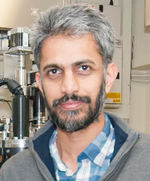
Prof. Gin Jose
Project Leader
Prof. Jose has research experience in the areas of novel laser glasses, photonic integration with dissimilar materials, pulsed laser processing of materials and laser spectroscopy with emphasis on applications in photonic components engineering and bio-chemical sensors. His current focus is on the ultrafast laser plasma manufacturing of novel functional materials for these applications. He invented the wavelength tuneable random laser in rare earth doped glass films and its application in non-invasive glucose sensing. He is also founder of Glucosense Diagnostics Ltd, and Ultramatis Ltd, two spinout companies from the University of Leeds. Prof. Jose’s research was/is supported by funding from NIHR i4i, DSTL, EPSRC, innovate-UK and industries.
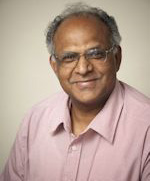
Prof. Animesh Jha
Co-Investigator
Professor Animesh Jha is a Professor for Applied Materials Science in the Faculty of Engineering at the University of Leeds. He has vast research experience on Rare-earth Materials, Minerals and Processing research and has special interests in thermal analysis, glass and glass ceramic processing, optical fibre and waveguide engineering and laser based Spectroscopic analysis of Rare-earth doped materials. Professor Jha is the programme leader for an EPSRC and EU project to engineer new dental materials and perform ex-vivo and in-situ mouth appliance trials. As part of this work, he is overseeing research on the interaction of lasers with biomaterials for applications in dentistry.
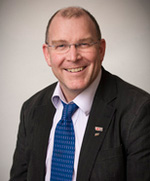
Dr. D.P. Steenson
Co-Investigator
Dr Steenson has over 30 years of research and development experience in high frequency electronics, micro-fabrication and cleanroom fabrication equipment and facilities management. The main focus of his work involves the design and fabrication of millimetre wave (30-300GHz) and sub-millimetre wave (300GHz-1Thz) electronic circuits and sub-systems based on III-V quantum barrier materials and novel processing approaches for applications in communications, remote sensing and spectroscopy. Other related activities include; Micro-machined vacuum components for sub-millimetre wave power generation, Co-integrated Er-ion doped glass on semiconductor approaches for all optical integrated subsystem development, and the fabrication and application of THz quantum cascade lasers.
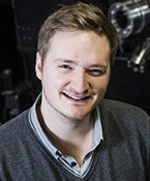
Dr Matthew Murray
Researcher Co-Investigator
Dr Murray has a PhD in femtosecond laser ablation and deposition for the fabrication of photonic and electronic materials and devices with multiple publications in this area. He also has significant experience in the newly emerged ULPI technology, which he helped develop for silicon based substrates. Dr Murray is now exploring this technology through Ultramatis Ltd, a University of Leeds spin out and was awarded the Entrepreneurial award 2015 from the Royal Academy of Engineering-ERA foundation for its commercialisation. Dr Murray has technical experience in photonics, laser ablation, materials science and photovoltaics, he also has a wealth of business experience in IP, business growth and development and commercialisation.
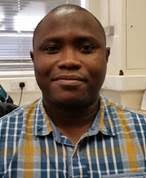
Dr Eric Kumi-Barimah
Experimental Officer
Dr Kumi-Barimah completed his PhD at Hampton University, Virginia, U.S.A. He specialised in laser interactions with matter, laser induced breakdown spectroscopy (LIBS) in the infrared region, fluorescence spectroscopy, crystal growth and optical refrigeration of rare earth ions doped halides. He has authored and co-authored several journal/proceeding publications in these areas. His responsibilities include supporting the purchasing of ULIP project equipment and managing the current femtosecond pulsed laser deposition platform at School of Chemical and Process Engineering in the University of Leeds.
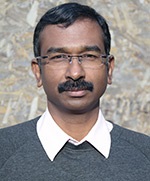
Dr Jayakrishnan Chandrappan
PRE
Jayakrishnan has 16 years of experience in optoelectronics R&D within the semiconductor industry. His experiences span over fundamental research in photonic integrated circuits to technology development for telecom and medical devices. Combining a mix of technology management and product development, he held various positions with Global foundries Inc.(US), A-STAR Institute of Microelectronics, Singapore and SAMEER, Indian Institute of Technology Mumbai, India. Recently he has been awarded a prestigious Mari-Curie individual fellowship by the European commission for research and innovation. He is also a winner of the emerging technology competition 2015, organised by the Royal Society of Chemistry, and also selected as one of the top three postgraduate researchers in 2015 by the University of Leeds.
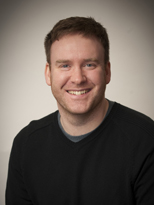
Dr. Billy Richards
Postdoctoral Research Fellow
Dr Richards completed a PhD from the University of Leeds in 2008 in near-infrared fibre laser development using tellurium oxide based glass fibres. His research experience includes fabrication and characterisation of a wide range of optical materials such as rare-earth doped glasses for laser and other photonic applications, laser cavity construction, and spectroscopy, resulting in more than 20 journal publications. During his academic career he has worked closely with various industry partners, including a >1 year secondment to Glass Technology Services’ Innovation Team, has been PI and CoI on several collaborative grant-funded projects, and a Marie Curie Fellow working in industry in Italy. Within the SeaMatics project, he is researching the development of micro laser cavities using the thin film gain materials fabricated at the University of Leeds.
Research Students
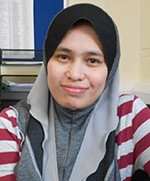
Suraya Ahmad Kamil
Suraya is currently a PhD student at the University of Leeds, working with Prof Gin Jose. Her research is focused on developing functional photonic layers on a silicon platform by forming glassy layers using ultrafast laser pulse implantation (ULPI) technique. These glassy layers which can act as optical amplifier, and are known as erbium doped waveguide amplifiers (EDWA) are suitable for application in silicon photonic technology.

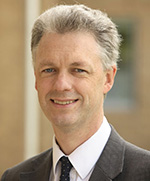
Prof. Ian White
Co-Investigator
Prof White is currently Master of Jesus College, van Eck Professor of Engineering, and Head of Photonics Research at the Department of Engineering, University of Cambridge. He has published in excess of 900 journal and conference papers, and is co-founder of Zinwave Ltd and Pervasid Ltd. Ian is a Fellow of the Royal Academy of Engineering, the Institution of Electrical Engineers and the Institute of Electrical and Electronics Engineers. He sits on a number of International Conference Committees, and is Editor-in-Chief of Electronics Letters and of Nature Microsystems and Nanoengineering.
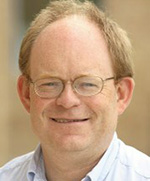
Prof. Richard V. Penty ,FREng, FIET
Co-Investigator
Prof Penty is Professor of Photonics at the University of Cambridge. His research interests include high-speed optical communications systems, high brightness lasers, optical amplifiers, integrated polymer waveguide systems, and radio over fibre and LAN systems. He has recently led a number of different projects which include the LINK FRIDAY and FORTRAN grants, EPSRC COLT, RODEOS, WOWS, PULSE grants and the Cambridge PI on the Basic Technology Micro and Nano Integration and INTERNET grants, as well as the EU FP7 VISIT, EuroPIC and PARADIGM projects.


Prof. Thomas F Krauss
Co-Investigator
Following a PhD in semiconductor ring lasers (1989-1992) at Glasgow University, UK, Prof. Krauss initiated research on planar photonic crystals in 1993. His work on fundamental concepts in photonic crystals, including his Nature paper in 1996, was pivotal for transforming photonic crystals from a scientific curiosity to the essential building block in photonics that they are today. Following 12 years of successful research at St Andrews, including being Head of School 2009-2012, he relocated with his group to York University, UK, in early 2013, where they have completed setting up a new suite of nanophotonics fabrication and characterisation laboratories.
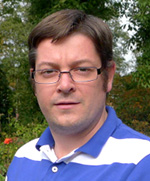
Dr Christopher Reardon
Dr Reardon received his PhD from the University of St Andrews in 2009. Since then he has worked with Prof. Thomas Krauss as a Post-Doctoral fellow, taking on responsibility for the day-to-day running of the microphotonics research group. Christopher has expertise in many aspects of micro/nano-fabrication including both photo- and electron-beam lithography, wet and dry etching, and thin-film deposition (using both a proprietary sputtering system, as well as designed and building an in-house and thermal/electron-beam evaporation).
Research Students
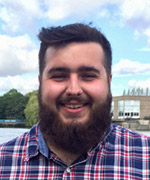
Lewis Reeves
Mr Reeves studied physics at the University of York, graduating in July 2015 with a MPhys degree. During his final year he worked in the Photonics group on a project to optimise Reactive Ion Etching for photonic devices. Since then he has worked with our bespoke Pulsed DC Magnetron sputtering system with an emphasis on reactively sputtered thin films. Lewis started his PhD in October 2015 within the Photonics group working on light emission from photonic crystals.

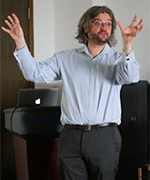
Prof. Richard Hogg
Co-Investigator
Prof Hogg has an excellent track record in the fabrication and engineering of novel surface emitting lasers. He will lead ‘Planar integration of active and passive devices on glasses’ research on pump laser integration in the SEAMATICS project. His significant achievements include development of multi-section QD super luminescent diodes (SLDs) for state-of-the-art device performance and the first demonstration of OCT imaging using a QD SLD; development of new fabrication processes for GaAs devices, development of QD based devices for data-communications, and as pump lasers. Prof Hogg is among world-leading researchers in EP-VECSEL manufacture and engineering. He has held several positions at the University of Sheffield and currently a professor at the University of Glasgow. His group has an excellent publication, and patenting track record (>200 journal papers), with strong industrial links, and has 5 PDRAs and 12 PhD students in related areas of research.
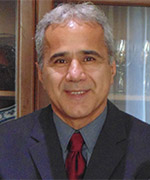
Dr Nasser Babazadeh
Dr Babazadeh obtained his Ph.D from the Department of Physics & Astronomy at The University of Sheffield in 2009. Since then he has worked as a post doctoral researcher at the Department of Electronic & Electrical Engineering. Nasser’s research has focused mainly on the development of GaAs-based opto-electronic. His principal research interests include the physics of semiconductor nanostructures; with particular emphasis on quantum dot and quantum well based lasers, VCSELS/VECSELS, Super Luminescent Diodes (SLDs), Semiconductor Optical Amplifiers (SOA), and Distributed Feedback Lasers.
